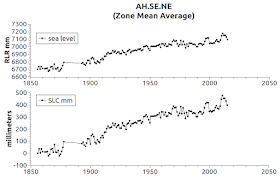Human civilization in general rejected renewable energy long ago, when it was utterly abundant, universal, and so cheap it was almost free.
The context now is: a global danger.
The question, then, is "what can culture / civilization (not individuals) do about that?" since culture / civilization rejected natural, renewable energy long ago --without our collective and our individual input.
Was anyone reading this post asked about it back in 1750 when the Industrial
No.
The reactionary question now should be: "can this current civilization, this culture, go back to the natural renewable energy of the natural Earth ecosystem that existed back then?"
That natural, renewable energy system existed for eons, for use by pre-human species, and for use by humans once they came along.
So, those who use what is now toxic-technology to make "something new," to replace something that has existed abundantly since before any civilization had evolved, are missing something (BTW that "something" isn't imagination).
But let's get real by noticing that the at-one-time most-quoted-historian was neither optimistic nor pessimistic when he wrote:
"In other words, a society does not ever die 'from natural causes', but always dies from suicide or murder --- and nearly always from the former, as this chapter has shown."(The Authoritarianism of Climate Change, quoting "A Study of History", by Arnold J.Toynbee). Again, he was neither optimistic nor pessimistic, he was simply being historical.
Further, the central question becomes "can this current civilization go back to natural renewable energy" rather than the central question being "is it possible in the abstract?" (remember "anything is possible" in the abstract, so that is a meaningless question).
Why is this civilization (the Anthropocine, the purveyors of the ongoing Sixth Mass Extinction) more able than the others before it? (boundless imaginary hope?)
How is our civilization more ecologically adept than those which historian Toynbee studied, then wrote about? (see quote above)
Those civilizations that committed suicide, or were murdered?
Since we all tend to think that "anything is possible" in the abstract, we should start to remember that we are not in "the abstract" (here in reality, many things are simply not possible).
Civilization has never been in the abstract (Civilization Is Now On Suicide Watch, 2, 3, 4, 5, 6, 7, 8).
II. Seaport Civilization Faces Itself
I have wondered a time or two if we should first go back to "a renewable ocean" (Why Sea Level Rise May Be The Greatest Threat To Civilization, 2, 3, 4, 5).
How is that going to work for us, assuming civilization is preparing for that future:
The majority of seaports around the world are unprepared for the potentially damaging impacts of climate change in the coming century, according to a new Stanford University study.(Stanford News). So, why is that relevant?
For one thing, we are like the long gone Phoenician civilization (The Extinction of Robust Sea Ports - 3).
Since most of our seaports are unprepared, then our civilization is likewise mostly unprepared:
Container-laden ships traverse countless supply chains from continent to continent, a method of transportation that accounts for more than 90 percent of the world trade by volume.(Smithsonian). Do you or I, as individuals, feel ok when we are "mostly unprepared" for something?
Regardless, since civilization is a group (not individuals) civilization must be prepared if it is to honestly feel comfortable (“Insanity in individuals is something rare – but in groups, parties, nations and epochs, it is the rule.” – Friedrich Nietzsche).
III. Some Sea Level Rise Graphs of Some Unprepared Seaports
I will list a few Dredd Blog Zones (see Zone In On Sea Level Change for a description of zones).
Graphs of sea level change in that zone will also be listed.
The following zones have various numbers of seaports within the zone boundaries.
Each seaport has a world ranking, in terms of volume of container trade.
These all have PSMSL tide gauge stations which began keeping sea level records in the 1800s within the zone boundary:
 |
| Shanghai, China: rank=1 Busan, S. Korea, rank=5 Qingdao Gang, China, rank=7 Taicang, China, rank=42 Gwangyang Hang, S. Korea, rank=63 Incheon, S. Korea, rank=65 |
 |
| Rotterdam, Netherlands: rank=11 Antwerp, Belguim, rank=16 Felixstowe, U.K., rank=37 Port of Le Havre, FR, rank=59 Bruges, Belguim, rank=70 |
 |
| Hamburg, Germany: rank=15 Bremen, Germany, rank=23 |
 |
| New York City, U.S.A.: rank=26 |
IV. Conclusion
As you can see, each zone tends to have its own degree of sea level change, which impacts upon different seaports in different ways.
Thus, each one has to be analyzed, repaired, moved, modified, or abandoned based on conditions in that zone.
Some nations are already suffering as a result of giving up national strengths to then have to rely on international seaport trade (Behind the Food Lines in Venezuela).
Videos below show the rather intensive construction and modification problems facing each different area.
"Stunning Singapore"
The next post in this series is here, the previous post in this series is here.
































